
Cookies
Dieser website nutzt Cookies, Tracking- und Re-Targeting-Tools (auch von Drittanbietern). Damit wollen wir unsere Websites benutzerfreundlicher gestalten, Informationen über die Nutzung sammeln, sowie für Sie passende Angebote und Werbung ausspielen. Mit dem Klick auf den Button “Akzeptieren” erklären Sie sich mit der Verwendung von Cookies, Tracking- und Re-Targeting-Tools einverstanden. In den Einstellungen können Sie Cookies, Tracking- und Re-Targeting ansehen. Ihre Einwilligung können Sie jederzeit mit Wirkung für die Zukunft widerrufen. Weitere Informationen zu Cookies erhalten Sie in unserer Datenschutzerklärung.

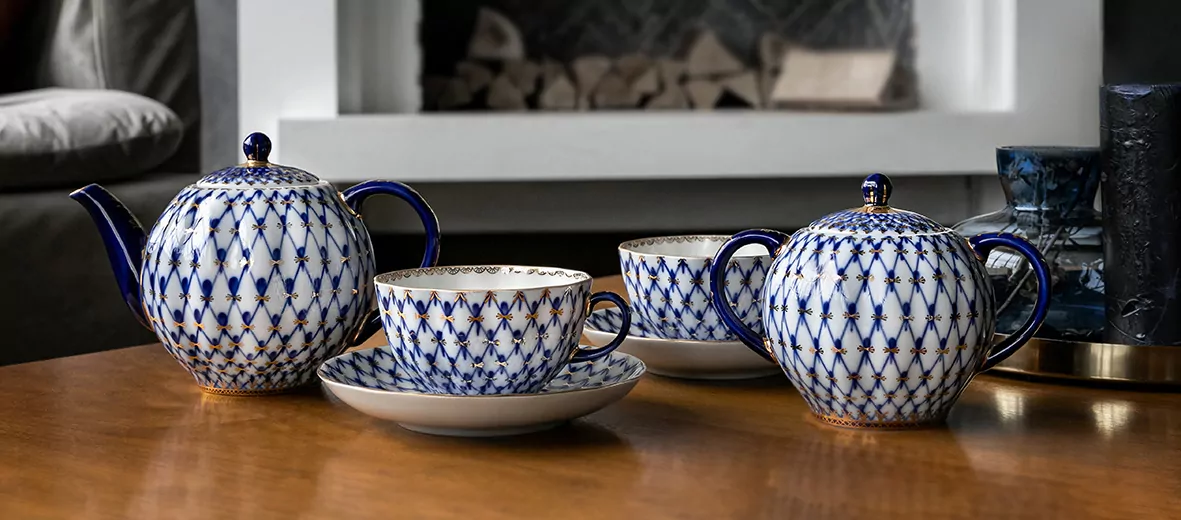
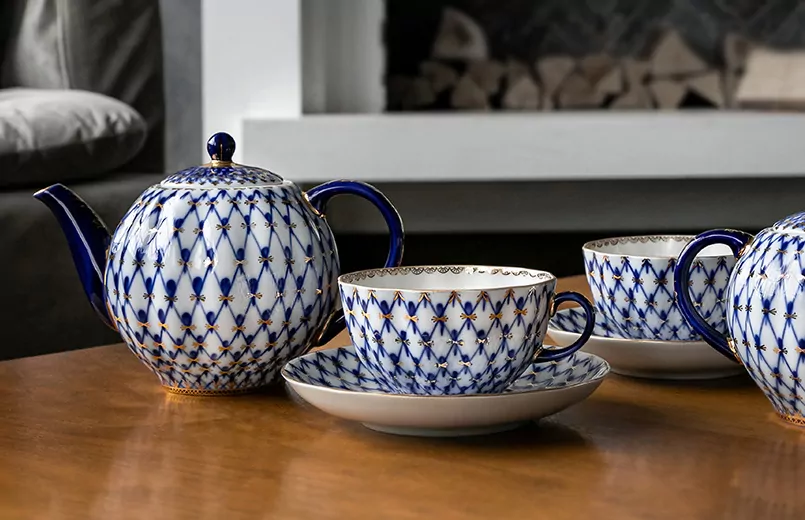
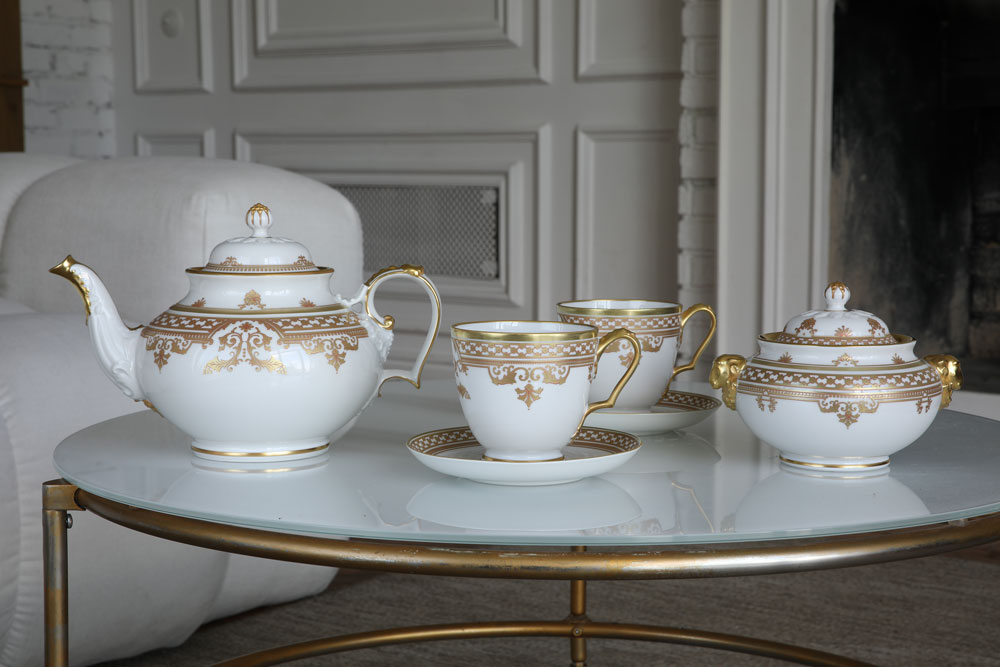
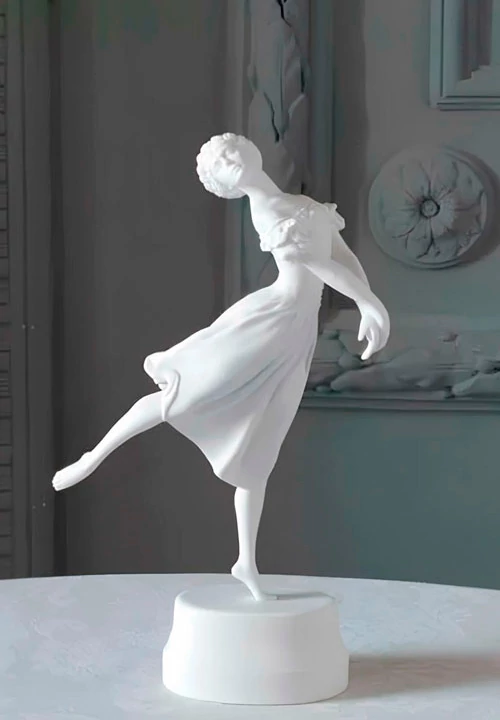

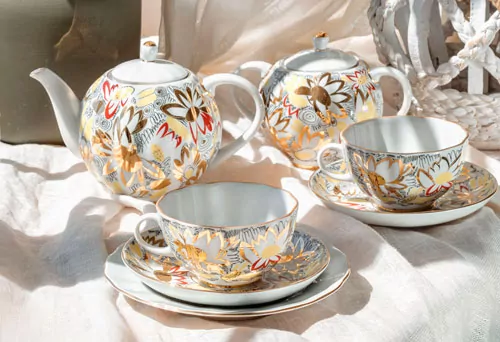



 Established in 1744 in Saint Petersburg by order of Empress Elizabeth, the daughter of Peter the Great, the Imperial Porcelain Manufactory became the first porcelain works in Russia and the third one in Europe.
Established in 1744 in Saint Petersburg by order of Empress Elizabeth, the daughter of Peter the Great, the Imperial Porcelain Manufactory became the first porcelain works in Russia and the third one in Europe. The Golden Age of Catherine II, called the Great, became the period when the art of porcelain reached its fullest development in Russia. From the very beginning of her reign Catherine gave much attention to porcelain production. Before going for her coronation to Moscow, she entrusted the Cabinet of Her Imperial Majesty to select the best porcelain articles at the manufactory and send them to the former capital of Russia for display and sale. In a year the empress visited the enterprise and bought 29 snuff-boxes there.
The Golden Age of Catherine II, called the Great, became the period when the art of porcelain reached its fullest development in Russia. From the very beginning of her reign Catherine gave much attention to porcelain production. Before going for her coronation to Moscow, she entrusted the Cabinet of Her Imperial Majesty to select the best porcelain articles at the manufactory and send them to the former capital of Russia for display and sale. In a year the empress visited the enterprise and bought 29 snuff-boxes there. Alexander I (1801–25). Alexander I inherited an interest in the porcelain factory, too. But the turbulent historic events that befell to his reign did not allow the emperor, who defeated Napoleon and saved Europe, from giving due attention to the development of Russian porcelain. The only man, who was responsible for the state of affairs at the Imperial Porcelain Manufactory throughout the reign of Alexander I,became the manager of the Cabinet of His Imperial Majesty, Count Dmitry Guryev. In 1809 Dmitry Guryev, who was eager to make the art department impeccable, invited the sculptor Stepan Pimenov, an adjunct-professor of the Academy of Arts, to the factory...
Alexander I (1801–25). Alexander I inherited an interest in the porcelain factory, too. But the turbulent historic events that befell to his reign did not allow the emperor, who defeated Napoleon and saved Europe, from giving due attention to the development of Russian porcelain. The only man, who was responsible for the state of affairs at the Imperial Porcelain Manufactory throughout the reign of Alexander I,became the manager of the Cabinet of His Imperial Majesty, Count Dmitry Guryev. In 1809 Dmitry Guryev, who was eager to make the art department impeccable, invited the sculptor Stepan Pimenov, an adjunct-professor of the Academy of Arts, to the factory... The Imperial Porcelain Manufactory provided almost all St. Petersburg palaces with its dinner sets during the reign of Alexander I and Nicholas I (1825-1855). Porcelain ware enjoyed the extensive diversity of styles. Among others, so-called Russian trend took the root. Fedor Solntsev, a Russian archaeologist and virtuoso, designed dinner sets for the Great Kremlin Palace in Moscow and Grand Duke Konstantin Nikolayevich of Russia.
The Imperial Porcelain Manufactory provided almost all St. Petersburg palaces with its dinner sets during the reign of Alexander I and Nicholas I (1825-1855). Porcelain ware enjoyed the extensive diversity of styles. Among others, so-called Russian trend took the root. Fedor Solntsev, a Russian archaeologist and virtuoso, designed dinner sets for the Great Kremlin Palace in Moscow and Grand Duke Konstantin Nikolayevich of Russia. During the reign of the last Russian Emperor Nicholas II (1894–1917), thanks to the technical innovations of the previous period, the plant experiences state samples in technical and technological respects. The wealth of art technology is the pride of the factory, and later, during the years of the First World War, whole economic and electrical porcelain were involved. All large orders were made by Emperor Alexandre Fedorov, who was at the World Exhibition in Paris in 1900. These are the services of "Alexandrinsky" and "Tsarskoye Selo."
During the reign of the last Russian Emperor Nicholas II (1894–1917), thanks to the technical innovations of the previous period, the plant experiences state samples in technical and technological respects. The wealth of art technology is the pride of the factory, and later, during the years of the First World War, whole economic and electrical porcelain were involved. All large orders were made by Emperor Alexandre Fedorov, who was at the World Exhibition in Paris in 1900. These are the services of "Alexandrinsky" and "Tsarskoye Selo." In March 1918 the State Porcelain Factory was put under the guardianship of People’s Commissariat for Education. The enterprise personnel was set a task to convert the former court man ufactory as soon as possible into an “experimental ceramic laboratory of republican significance”, producing “propaganda porcelain in the high meaning of this work – revolutionary in content, perfect in form and impeccable in its technical execution.” The first post-revolutionary years were marked by a truly unseen boom of mass-scale propaganda art. In this festive polyphony of resounding and vivid colours, in the use of special imagery for the propaganda of the victorious revolution, porcelain products occupied a prominent place.
In March 1918 the State Porcelain Factory was put under the guardianship of People’s Commissariat for Education. The enterprise personnel was set a task to convert the former court man ufactory as soon as possible into an “experimental ceramic laboratory of republican significance”, producing “propaganda porcelain in the high meaning of this work – revolutionary in content, perfect in form and impeccable in its technical execution.” The first post-revolutionary years were marked by a truly unseen boom of mass-scale propaganda art. In this festive polyphony of resounding and vivid colours, in the use of special imagery for the propaganda of the victorious revolution, porcelain products occupied a prominent place. Following industrialization and collectivization carried out in the country, as a result of which, according to the party documents, “a victory of Socialism was ensured in the USSR”, a wide-scale “cultural construction” started in the early thirties. Socialist Realism, practically denying all alternative trends in art and literature, was proclaimed as the only true method to be used by Soviet artists. The Lomonosov Porcelain Factory that had rich cultural traditions and professional personnel came to be regarded as the basis for the creation of a new style consonant with socialist everyday life.
Following industrialization and collectivization carried out in the country, as a result of which, according to the party documents, “a victory of Socialism was ensured in the USSR”, a wide-scale “cultural construction” started in the early thirties. Socialist Realism, practically denying all alternative trends in art and literature, was proclaimed as the only true method to be used by Soviet artists. The Lomonosov Porcelain Factory that had rich cultural traditions and professional personnel came to be regarded as the basis for the creation of a new style consonant with socialist everyday life. In post-war art, after the asceticism of the blockade years, the overwhelming need for beauty and joy is expressed. In porcelain painting, fertility and wealth in the works of Anna Efimova, folk popular motifs and fairy-tale fantasies by Alexei Vorobyevsky, decorative ornament of Anna Yatskevich became an example of this. In sculpture - the theme of childhood and motherhood in the works of Sofia Velikhova and Galina Stolbova. The animal world and literary characters are represented in the plastic of Boris Vorobyov. A talented illustrator and writer Yevgeny Charushin, outstanding sculptors Vera Mukhina and Elena Yanson-Manizer, who embodied...
In post-war art, after the asceticism of the blockade years, the overwhelming need for beauty and joy is expressed. In porcelain painting, fertility and wealth in the works of Anna Efimova, folk popular motifs and fairy-tale fantasies by Alexei Vorobyevsky, decorative ornament of Anna Yatskevich became an example of this. In sculpture - the theme of childhood and motherhood in the works of Sofia Velikhova and Galina Stolbova. The animal world and literary characters are represented in the plastic of Boris Vorobyov. A talented illustrator and writer Yevgeny Charushin, outstanding sculptors Vera Mukhina and Elena Yanson-Manizer, who embodied... The year 2002 witnessed an event that marked the start of a new period in the history of the enterprise: the controlling shareholding was bought out from the foreign owners by the family of well-known Russian entrepreneurs and donators – Nikolay Tsvetkov and Galina Tsvetkova. Galina Tsvetkova, an art collector, connoisseur and expert in Russian artistic porcelain, was appointed Chairman of the Overseeing Committee of Lomonosov Porcelain Factory Company
The year 2002 witnessed an event that marked the start of a new period in the history of the enterprise: the controlling shareholding was bought out from the foreign owners by the family of well-known Russian entrepreneurs and donators – Nikolay Tsvetkov and Galina Tsvetkova. Galina Tsvetkova, an art collector, connoisseur and expert in Russian artistic porcelain, was appointed Chairman of the Overseeing Committee of Lomonosov Porcelain Factory Company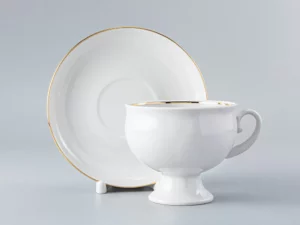
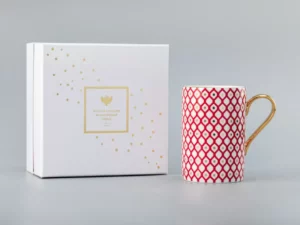



 +49 174 255 77 73
+49 174 255 77 73 info@fondis.berlin
info@fondis.berlin Whatsapp chat
Whatsapp chat